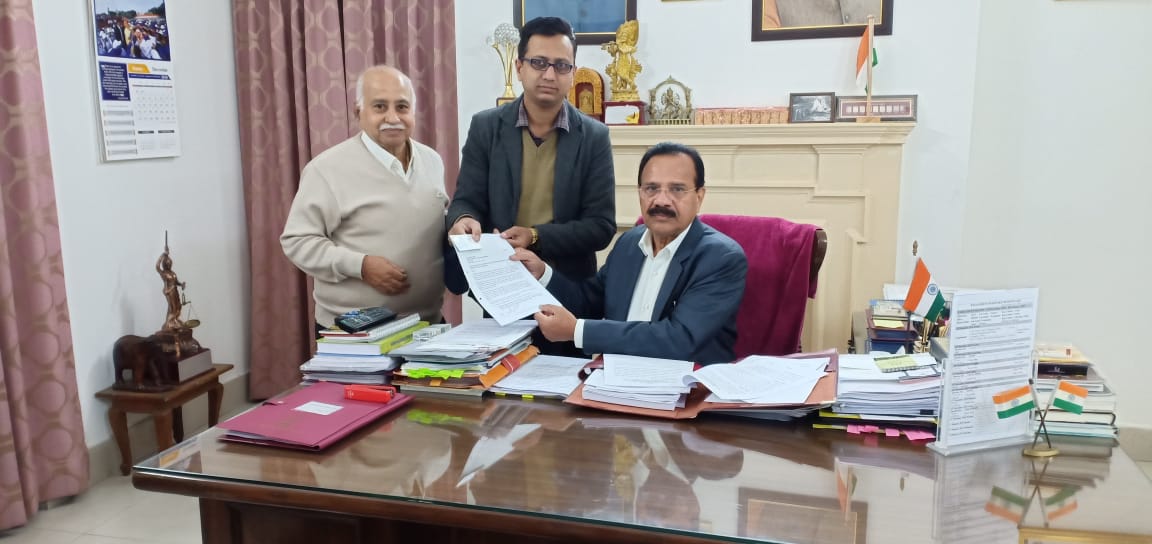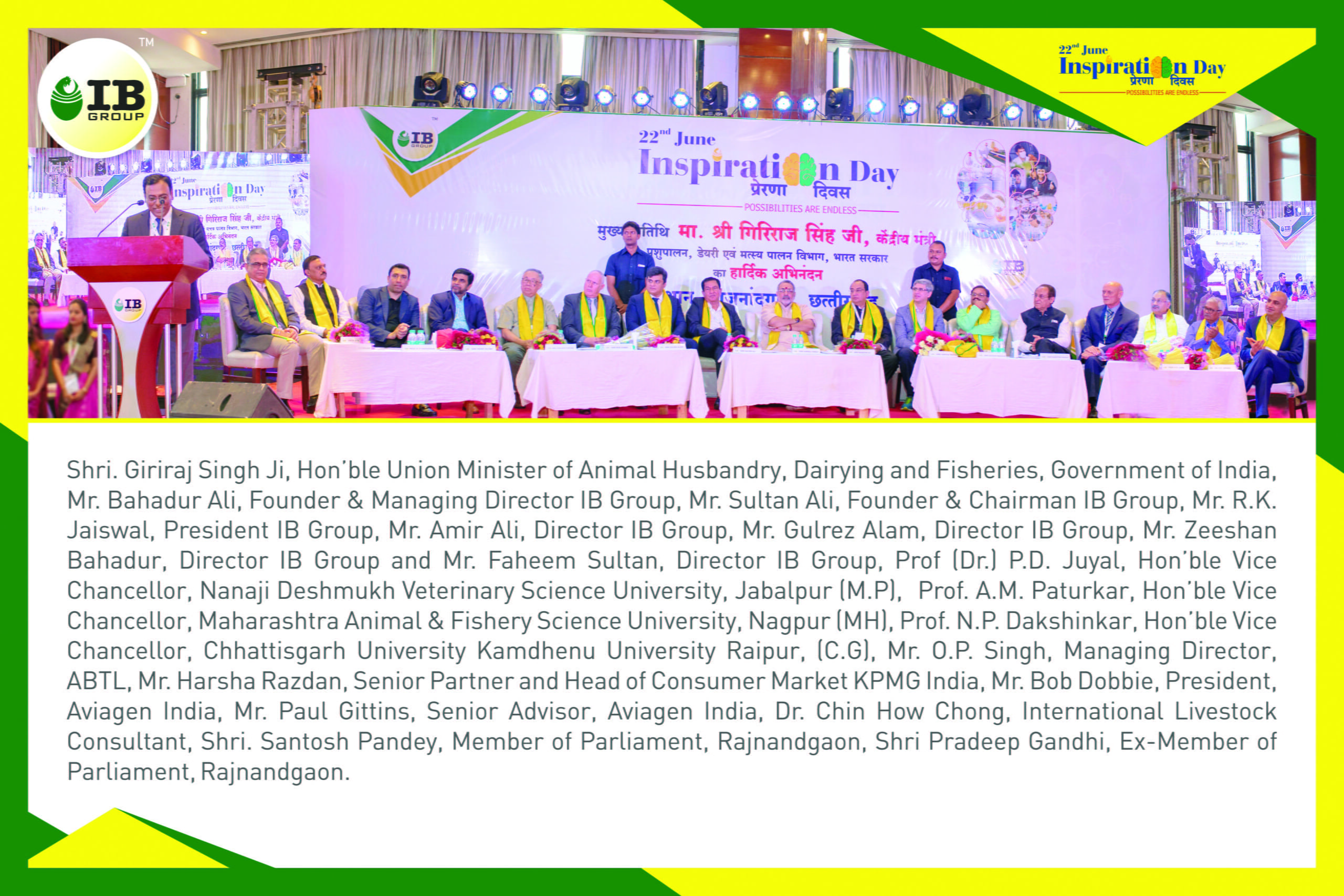EXCERPTS FROM THE INTERVIEW WITH CARGILL ANIMAL NUTRITION MD, IMRE HAVASI

Bangalore
Responding to our Editor Mr BS Rana, Cargill Animal Nutrition, India Managing Director, Imre Havasi unfolded the details of “Hatching Hope Global initiative” and the long lasting impact that it shall have on the underprivileged population segment of India.
Responses from: Imre Havasi, Managing Director, Cargill Animal Nutrition, India.
1. What is the Hatching Hope Global Initiative ?
Hatching Hope Global initiative aims to improve nutrition and livelihoods of 100 million people around the world by 2030 through the production, promotion and consumption of poultry. Hatching Hope will work directly with small holder farmers in India, Mexico and Kenya.
The initial phase of Hatching Hope in India will focus on improving the nutrition and income of 1.7 million people through backyard poultry farming and increased consumption of poultry products in Mayurbhanj, Odisha. The program will also expand its reach through innovative mass media and advocacy campaigns, highlighting the importance of poultry production and consumption for improved nutrition. Farmers will be connected to markets and equipped with the goods and services that they need to be successful participants in the poultry value chain. Hatching Hope will support farmers to become a part of the solution, bridging the global food and nutrition security gap and boosting local economy.
2. Why is the Hatching Hope Global initiative focused on animal protein ?
Food can be the powerful driver of change. The focus on balanced diet includes consumption of fruits and vegetables along with small portions of meat and dairy productswhich helps in meeting the protein requirements. Especially in the state like Odisha, where NHFS-4 statistics shows that more than 30% of children under age 5 are stunted, animal-based protein will be an impactful addition to the diets.
Through the Hatching Hope Global Initiative, we are focusing on ensuring holistic development of people including awareness on consumption of balanced nutrition by promoting poultry industry as both a means of employment as well as a source of nutrition.Poultry meat and eggs can provide a much-needed supplement to the diets and help in improving the status of nutrition in the State.
Cargill’s expertise and innovation in this area and Heifer International’s community development programs have shown how animal agriculture production can help improve health and boost livelihoods while remaining environmentally sustainable.
3. What are the opportunities that are associated with rural poultry ?
The opportunities associated with rural poultry are many: all members of the household can be engaged in the production, especially women, youth, and the elderly. With lower capital investment and relatively short production cycles, poultry can deliver quick income opportunities for households across diverse environmental landscapes.
Besides this, access to poultry meat and eggs provides aconsistentsource of nutrition particularly for children, and can rapidly help improve daily diets. With growing demand for eggs and chicken meat, there’s an excellent opportunity to stimulate the supply side through programs like Hatching Hope using appropriate interventions and support measures.
4. How much is Cargill investing in this program? What is the cost ?
Cargill is committed to this program for the long-term which is why we’ve set our goal out to 2030. The partnership includes Cargill’s investment of technical expertise and product knowledge, market connections as well as financial support for the program.
We have made an initial $8M commitment to Hatching Hope Global Initiativefor the first four years, which does not include our in-kind investments on the technical, product and market connections side.
5. Why is Cargill involved and how will the company benefit financially from this project?
In Cargill, we recognize that to make these programs sustainable they must be ingrained in the business’s core strategy. Through our business and community commitments, we continue to invest in creating a new generation of farmers, their families and the communities we operate in.
We know that the solution isn’t writing checks and donating food. It’s recognizing that these farmers we’re working with in Hatching Hope are smart, capable, resourceful entrepreneurs who will go farther if they receive the support; they need to build sustainable businesses. We believe the 800 million smallholder farmers around the world need to be part of the solution to help us feed 10 billion people by 2050. As these farmers are connected to markets and meetlocal demand, they’ll need access to a wide range of goods and services to support their poultry production. Cargill’s willingness to adapt and identify solutions facing smallholder farmers, with the support of Heifer, will enable Cargill to access this predominantly untapped and under-served market.
6. Why the Hatching Hope Global Initiative isfocused on women farmers ?
We know that when women have control over their income, it can be truly transformative for the whole family and the community. Women invest in their children, in the healthcare of the family and in improving their productivity. We’ll work with these women farmers to form and strengthen self-help groups and local producer organizations. We’ll also provide training on how they can improve the quality and quantity of their products – in a safe and sustainable way.
7. How will Hatching Hope help achieve gender equality ?
All members of the household can be engaged in the production of poultry – especially women, youth, and the elderly – because the physical labor requirements are adaptable to different ages and abilities. We have seen in the India program how women have gained confidence in their livestock handling capabilities through self-help and educational programs. When the women’s poultry production improves, other household members tend to notice, and women will eventually gain influence to make decisions independently in their families. Hatching Hope will continue to equip women with the knowledge and expertise they need to make their businesses successful, so they can contribute to increasing their household incomes.
8. Beyond the three primary geographic areas (India, Kenya, Mexico), what other countries have the greatest potential for Hatching Hope ?
Hatching Hope Global Initiative is launching in India, where we will be working in Odisha state to improve the nutrition and incomes of 300,000 smallholder farmer households (1.7 million individuals) through backyard poultry farming and increased consumption of poultry productsThe program will also expand its reach through innovative mass media and advocacy campaigns, highlighting the importance of poultry production and consumption. Farmers will be connected to markets and equipped with the goods and services that they need to be successful participants in the poultry value chain. It will help farmers in becoming part of the solution to bridge the global food and nutrition security gap and boosting the local economy.
Hatching Hope will prioritize nations and geographic regions where both Heifer International and Cargill Animal Nutrition have a significant on-the-ground presence and where poverty and malnutrition are rife. The program is implementing activities in India, Kenya and Mexico, and potentially other countries when Hatching Hope secures additional resources and partners.
These three initial countries have different market contexts, needs and levels of market maturity. This will allow us to design different approaches and intervention models that will provide insight and learnings that we will bring into the additional countries we will work with.
9. As small holder farmers increase their production, what will you do to ensure they have markets to sell their chickens and eggs?
As we work with small holder farmers to increase their knowledge and grow their capabilities in poultry production and increase availability of nutrient-rich food, we’ll also be driving local and national campaigns that aim to increase awareness of the benefits of consuming poultry and eggs for nutrition benefits. This will increase demand and build sustainable markets for these local producers.
In many areas, the project will assist farmers in forming producer organizations. These organizations enable farmers to bulk their product for sales. By bulking, farmers can guarantee a sustainable supply to buyers which are vital in creating connections to formal markets.
10. What resources and tools does Cargill have that can help small holder farmers increase production?
Every day around the world Cargill works with animal protein producers starting as small as backyard flocks with 8 to 10 parent birds going up to a flock size of 50 chickens to improve their productivity. First, we will ensure the production model breed, flock size, housing, nutritional program is what is best for local context and market opportunity. We will run the numbers to make sure that our recommended production model maximizes the increase in living income for the farmer, while respecting available local resources. We will set up simple measurement tools to ensure farmers can track their productivity and that they get trained on what they need to do to maintain productivity and profitability. In parallel, we will be building community resilience to weather the challenges and opportunities that will come.
11. Will Cargil land Heifer be working with 100 million farmers ?
Hatching Hope Global Initiative will reach 100 million individuals across the world through this 12 year program. As part of this program we will work on three pathways which will focus on promoting both nutrition and livelihoods:
• Pathway One will improve livelihoods through poultry production. This is targeted work within communities, working alongside women farmers.
• Pathway Two will increase awareness and education about poultry production and consumption. This area of work will see us reach a much larger audience and help to build sustainable markets for women farmers.
• Pathway Three will increase access to products, services, solutions and markets that improve poultry farmers’ net income and productivity. This work will take place within the same communities where we are working with women farmers, providing new livelihood opportunities, while also leveraging Cargill’s existing distribution channels.





